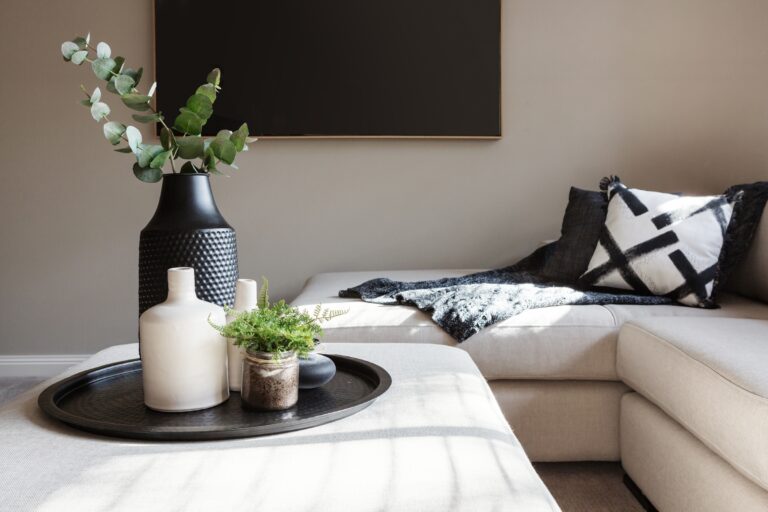As an interior designer, you already understand the importance of creating plans. Design plans, project plans, floor plans—they’re the foundation upon which your creative vision takes shape. But did you know that creating a business plan is also a pivotal step in building a successful design firm?
An interior design business plan documents your vision, goals, strategy, and blueprint for growing your business. Think of your interior design business plan as a roadmap, guiding you forward, step by step.
In this post, I’ll dive into exactly why interior design business plans are critical for the growth of your firm, and how you can create one that sets you up for success.
Table of Contents
Why do you need a business plan as a designer?
You might be asking yourself this question, wondering if it’s really worth the effort. The answer is a resounding yes. It’s not enough to be an excellent designer. You also need to know how to run a business. And trying to run a business without a plan is sort of like driving to an unfamiliar destination without a map or GPS. You might have a general sense of where you’re headed, but without precise directions and landmarks to guide you, the journey becomes fraught with uncertainty and unnecessary detours.
By creating a business plan, you can hopefully avoid those detours and move forward with conviction and purpose.
A well-crafted business plan, which documents the goals of your business and strategies and timelines for attaining those goals, will provide you with the scaffolding necessary to build the design firm of your dreams. It will also help keep you accountable. By regularly referencing back to your business plan, you can quickly get a snapshot of your progress and what still needs to be done.
A business plan is also a great way to stay aligned with present and/or future team members, ensuring everyone is on the same page and headed in the same direction. And if you decide to seek investors at any point, having a business plan on-hand will be incredibly useful.
How to write an interior design business plan? (11 steps)
Crafting an interior design business plan requires thorough research, strategic thinking, and a clear understanding of your objectives. Here are the essential steps to help you create a comprehensive and actionable plan for your design firm:
1. Define your vision and goals
Start by digging deep and articulating your long-term vision for your interior design business. Establish specific, measurable goals that align with your vision, including financial objectives, timelines, and growth milestones. This process involves envisioning where you see your business in the next 5-10 years and setting tangible targets that reflect both your aspirations and the realities of the market.
Check out our workshop on getting paid what you’re worth with Gail Doby to help you unleash your business vision and goals.
2. Identify your target market
If you haven’t already done so, now is the time to conduct a detailed analysis of your target market—their needs, preferences, and demographics—and get it down on paper. This information will help you tailor your services and messaging to consistently meet the needs of your ideal client, and serve as a North Star, which you can keep referring back to in the future. Understanding your target market is crucial for effective marketing, service development, and client acquisition strategies.
Grab our detailed guide on getting crystal clear on your ideal target client.
3. Outline your services
When defining the range of services your interior design business will offer, you must consider the preferences and requirements of your target market, your own bandwidth, and your financial goals. Once you’ve landed on the services you plan to offer, provide detailed descriptions and breakdowns of each. You also want to ensure that you’ve created a pricing strategy for each service that reflects both the value you provide and the market demand.
Get our ultimate pricing guide to help set accurate prices for your services.
4. Plan your finances
Develop a comprehensive financial plan for your interior design business, including revenue projections, expenses, and profit targets. Determine your startup costs, ongoing expenses, and revenue streams. Set clear financial goals and establish strategies to achieve them, such as pricing strategies, budget allocation, and revenue diversification. You’ll also want to think about your tax strategy and explore potential sources of funding or investment to fuel your growth.
Watch our workshop with Megan Dahle on managing and understanding your finances like a pro.
5. Develop a marketing strategy
While you may want to consider creating a separate marketing plan, you should also factor marketing into your interior design business plan. Outline your strategy for attracting clients, identify the channels you’ll need to reach your target audience, and develop a plan for creating messaging and branding that will communicate your value proposition effectively. This involves leveraging various marketing channels, such as social media, your website, networking events, and partnerships and collaborations, to build brand awareness and generate qualified leads.
Check out our guide with 9 proven ways to get clients (+tutorials!).
6. Build your team
Assess the team you will need to support your interior design business, considering factors such as expertise, skills, and workload. Determine the roles and responsibilities required to operate your business efficiently, including designers, project managers, assistants, and external contractors. Consider the hours per week required from each team member to meet your business objectives, and consider whether you need to invest in ongoing training and development to optimize your outcomes.
7. Define operational processes
Establish operational processes and workflows to streamline your interior design business operations. Define protocols for client communication, project management, and quality assurance to ensure consistency and efficiency. Determine the hours per week needed to manage various aspects of your business effectively, and leverage technology and automation tools, like the ones you can access with DesignFiles, to optimize your workflow and enhance productivity.
Watch our workshop on advanced project management strategy with Kimberley Seldon.
8. Assess and mitigate risk
Identify potential risks and challenges that may affect your interior design business and develop strategies to mitigate them. Consider factors such as economic fluctuations, market competition, and project delays. Implement contingency plans and risk management strategies to minimize disruptions and ensure the continuity of your business.
9. Set milestones and timelines
Break down your goals into actionable milestones with specific timelines for achieving them. Establish measurable criteria for success and track your progress regularly. Determine the hours per week required to meet your milestones and allocate resources accordingly to stay on track. Regularly review your timelines, and adjust if needed to reflect changes in market conditions, client feedback, and internal priorities.
Watch our live hotseat coaching sessions with Nancy Ganzekaufer to get inspired on your next goal.
10. Monitor and adapt
Continuously monitor your interior design business’s performance and adapt your strategies as needed to capitalize on opportunities and address challenges. Stay flexible and responsive to changes in the market, client preferences, and industry trends. Regularly review and update your business plan to reflect evolving circumstances and ensure alignment with your goals.
11. Seek feedback and collaboration
Seek feedback from mentors, peers, coaches, and other industry experts to refine your interior design business plan. Don’t shy away from leveraging external insights to enhance your business strategy and drive growth.
Looking for a pro community? Join the DesignFiles Facebook group with over 10,000 interior designers.
3 sample interior design business plans
Check out these examples to inspire your own business plan.
1. Interior design business plan example by Wix
This sample business plan does a great job of outlining all the key areas of the business in a clear and succinct way. By keeping it concise, this business plan is easy to follow and digest.
We recommend diving a little deeper into topics such as target market. If you can get more specific in creating your personas—for example, getting clear on the age range and kinds of budgets of your ideal client—that will help you be more targeted in all your strategies. We also recommend going into more detail with your competitive analysis as really digging into what your competitors are doing will help you strengthen your own plan.
Finally, going into more detail about your marketing and financial plans will help give you a clearer direction for moving forward. While you can certainly create separate more detailed documents for each, where you get into the nitty gritty, it’s still helpful to include as much detail as possible in your overall business plan so everything is in one place.
2. Interior design business plan example by OGS Capital
This more substantive business plan example goes into much greater detail, including graphics and cost breakdowns. While you don’t necessarily need to go into this level of granular detail in your business plan, it’s always helpful to look at different examples and approaches so you can tailor yours. Ultimately your business plan needs to be unique to your own business, needs, and goals.
3. Business News Daily business plan template
Ready to create your own? This business plan template from Business News Daily is a great resource to help you get started in creating your own interior design business plan.
Conclusion
As you get started on crafting your interior design business plan, remember it’s more than just a document. By investing the necessary time and reflection now to create a solid plan, you’re laying the foundation from which the rest of your business will grow and evolve.
In addition to outlining the tangible elements of your business strategy, your business plan also embodies your vision and values, serving as your compass as you move forward.
Ready to grow your design business? Create a strong foundation with the most intuitive software and save dozens of hours each month. Learn more about DesignFiles.


